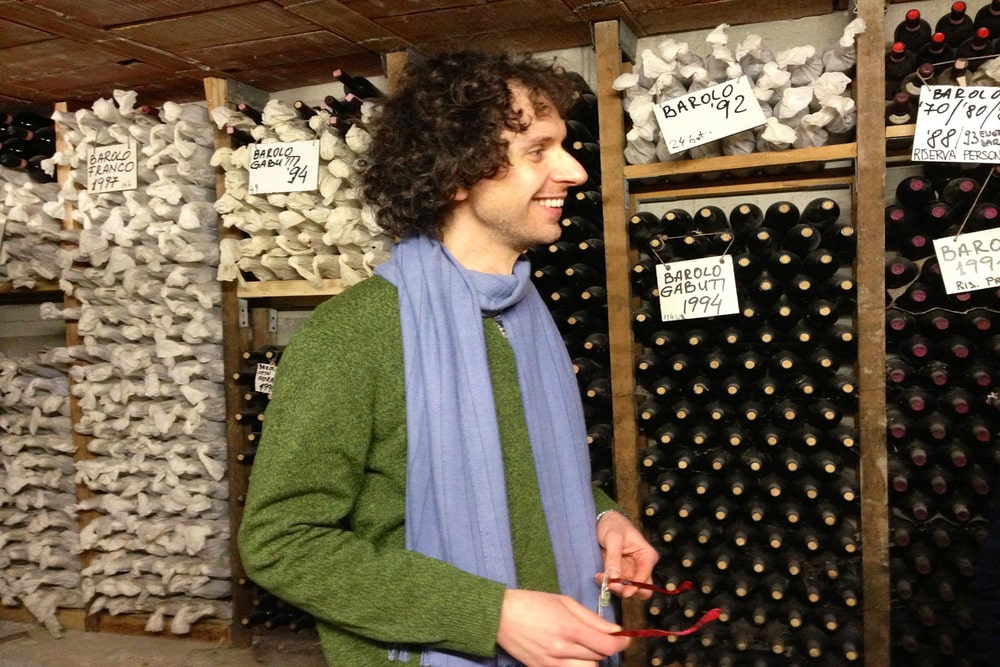Serralunga d'Alba, Piedmont
Augusto Cappellano is the fifth generation of the family to produce wine from vineyards in Serralunga d’Alba. His great-grandfather, Filippo, acquired substantial acreage there and, in 1870 established the estate. At his death, his son, Giovanni, an enologist, continued his father’s work, but he died in 1912 from a tropical fever contracted in Tunisia, perhaps while he was looking for vines that were not susceptible to phylloxera. Giuseppe, his brother, then retired from his pharmaceutical chores to run the estate and he decided to sell his grapes to a large local winery.
When Giuseppe passed away in 1955, shortly thereafter, Augusto’s father, Teobaldo, who was born and raised in Eritrea, returned to Serralunga to revive the azienda. He rebuilt the cantina and the image of Cappellano as well, much smaller in size (4 hectares) but far higher in quality. In his turn, he also produced once again the extraordinary Barolo Chinato using the ancient family recipe, all the while becoming one of the most admired and respected figures in the Barolo area.
Teobaldo Cappellano is, and was, a legend in Barolo. He was, along with Bartolo Mascarello and Giuseppe Rinaldi, one of the region great traditionalists. Throughout the decades Cappellano’s Barolos have remained timeless; a glimpse at what Barolo can and should be if left unmarked by the strong hand of modern, manipulative wine making.The near-universal admiration accorded Cappellano was striking, given that his attitudes were often controversial. Variously described as a “wine artist,” “professional polemist,” and a “poet, philosopher and winemaker in his spare time,” he was president of the influential Vini Veri (or “true wine”) group. He was also a longtime leader of Italy’s sustainable agriculture movement.
From the start he eschewed new French barriques, cultured yeasts, and enzymes. He was also an original convert to sustainable agriculture, even before modern marketing turned it into a cliché. He gave up the use of chemicals completely in the vineyard and winery and, in 1983, Cappellano refused to deal with wine media who assigned scores to his wines. He claimed scores were a divisive force among wine growers (and led to wines that pandered to critics palates). Surprisingly, his wishes were respected and as such the major wine media has not scored a Cappellano wine for over 40 years. Partly due to this stance, and the minuscule amount of wine produced, these wines remain very hard to find real collectors’ items.
Teobaldo passed away in 2009 and today his son Augusto takes the reins and places his special mark on the wines of this estate following of his father’s winemaking philosophy. The four hectares of vineyards owned by the Cappellano family are mostly in Serralunga d’Alba and are situated in the Gabutti cru which is on the western slopes of Serralunga at approximately 300 meters altitude. The land is farmed according to organic principles and the production of the wine is accomplished by using indigenous yeasts, a strictly limited amount of sulfur and winemaking is traditional, which means long fermentation and extended aging in large oak casks. The wine is not filtered prior to bottling.
Cappellano makes two Barolos from the Gabutti vineyard in Serralunga. Both are made along rigorously traditional lines. The Barolo Piè Rupestris emerges from a parcel planted on American rootstock. It is generally a rich, ample wine with notable depth and density. Cappellano’s Barolo Piè Franco, from own-rooted Michet clones that form very loose bunches, is much more aromatic and beguiling in style.
“The Cappellano Barolos are made in small numbers and are nearly impossible to find”. Antonio Galloni, Vinous
“Cappellano's Barolos represent the very best of the artisan tradition in Piedmont”. Antonio Galloni, Vinous, May 2017
Main Wines
Barbera d'Alba Vigna Gabutti
Barolo Piè Rupestris
Barolo Piè Franco



